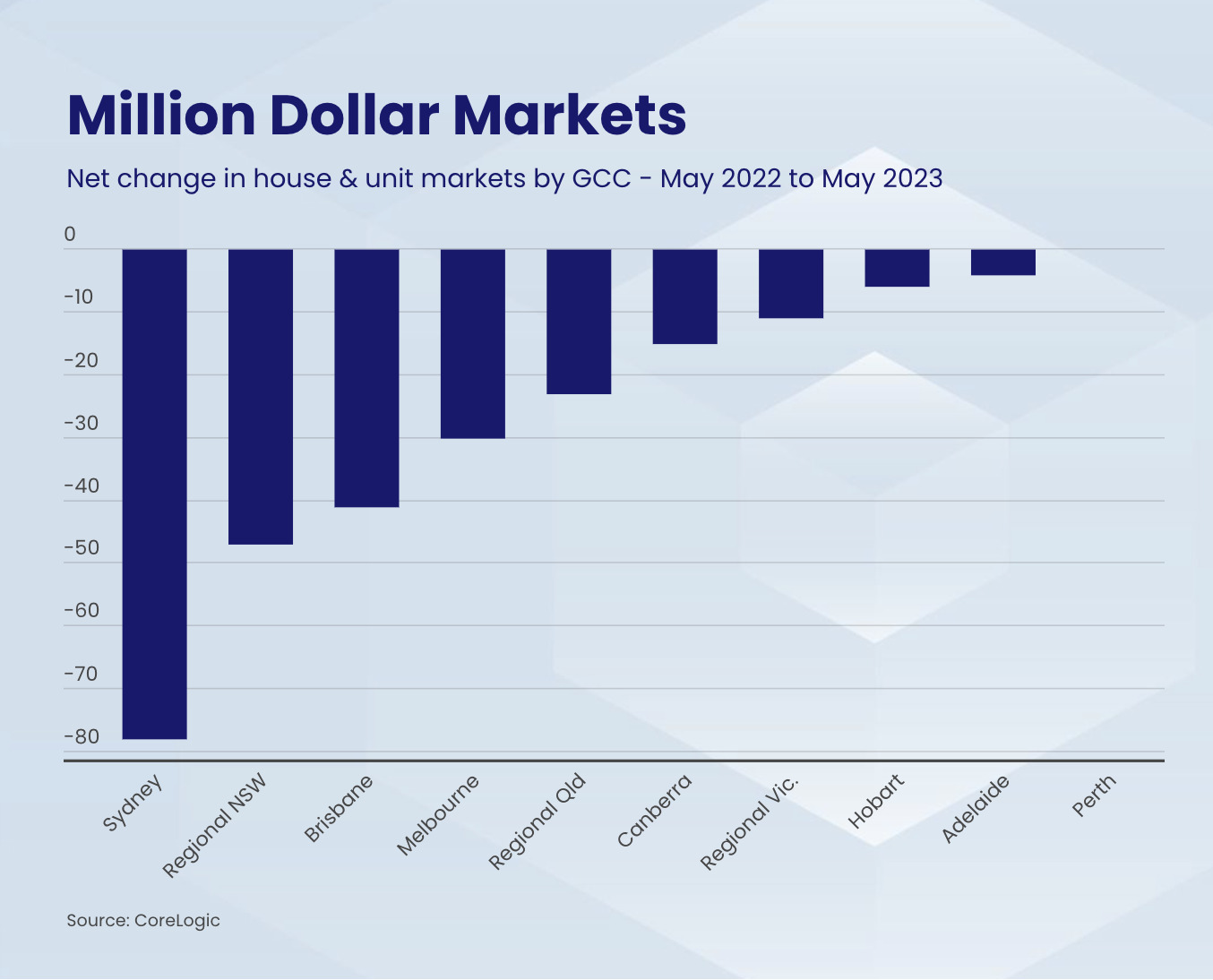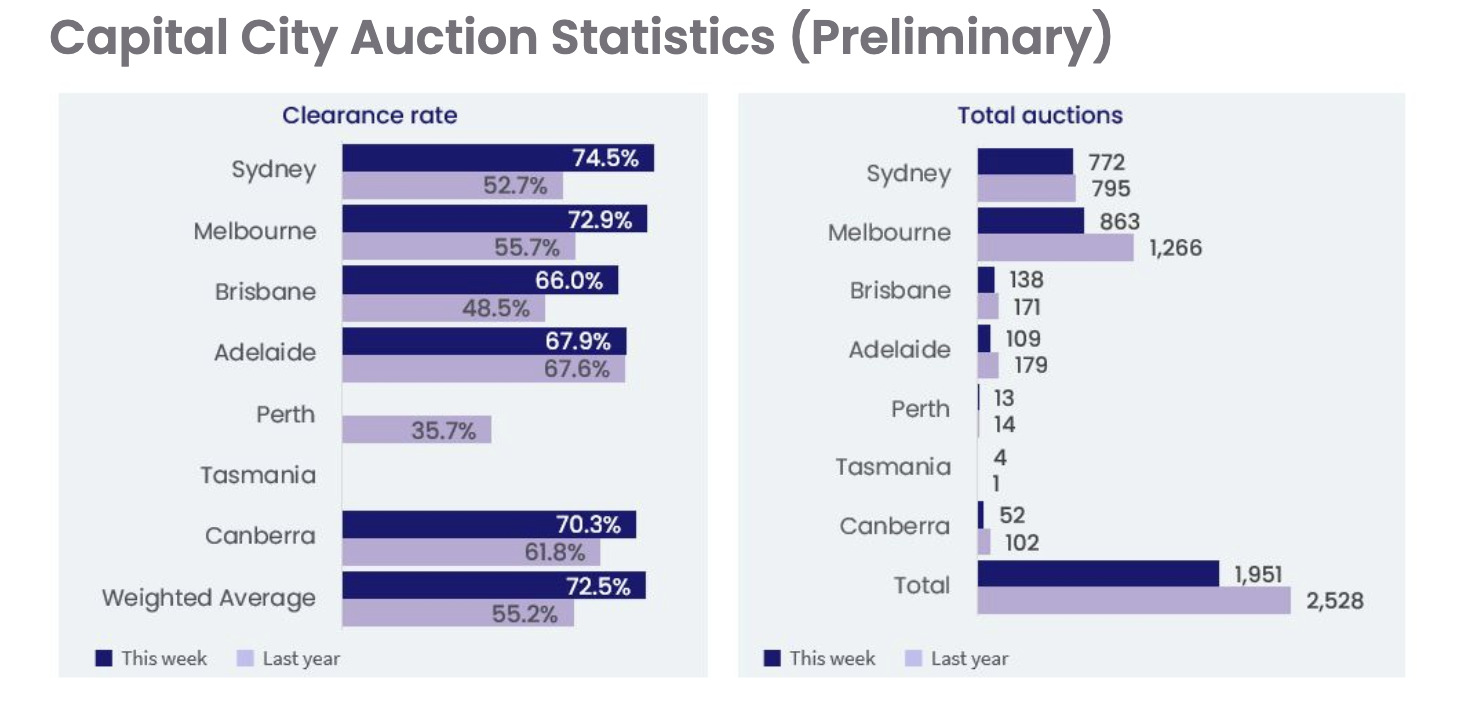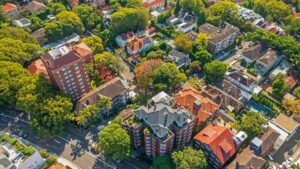The Million Dollar Property Club: One year on and already heaps more exclusive

Via Getty
T’were this time last year, when Aussie data firm CoreLogic made its big Million Dollar Markets reveal – a report which featured a record number of Australian suburbs with a median house and unit value of $1 million or above.
Today, exactly 12 months and 12 interest rate rises later, they’re no longer just handing out entrance access to to the million-dollar club executive bathrooms.
This club has become a bunch more exclusive, with many of last year’s jazzed up new members now finding they’re no longer welcome at the buffet, with a large proportion of homeowners falling below the magic million-dollar mark.
Between April 2022 and February 2023, CoreLogic’s national Home Value Index moved through the sharpest decline on record, falling -9.1% in 10 months.
A record decline
While national dwelling values have recovered 2.3% over the past three months, they remain -6.9% below the recent peak.

As of May 2023, just 988 (22.3%) of the 4,436 house and unit markets analysed nationally had a median value at or above $1 million, down from 1,243 or 28% this time last year.
In fact a pretty excitingly grand total of 237 house markets (and 19 unit markets) had their average values fall back and out of the $1 million club window in the past year, according to erudite and ever jazzed-up CoreLogic Economist Kaytlin Ezzy.
Burns Beach – Ezzy elabortes – and that’s an obscure corner of coastal northern Perth – was the only new entrant.

Sydney had the largest decline in suburbs falling below $1 million, with 78 house and unit markets recording a decline in values to below seven figures.
Ms Ezzy said it was unsurprising to see Sydney top the list given it recorded the largest peak-to-trough decline in values of -13.8%.
“While declines across Sydney’s more expensive markets were some of the largest across the country, many of these markets had a relatively high starting point allowing them to retain the seven-figure price tags,” she said.
“The trend among the suburbs where values have fallen below $1 million is in the more affordable locations on Sydney’s outer mortgage belt and fringe areas. Despite recording smaller declines it’s these suburbs where median values have dropped million-dollar threshold.”
On the happy side, capital city auction activity almost doubled this week following the quieter long weekend last week.
It’s the highest number of auctions in 11 weeks, with 1,951 homes scheduled.
It’s -22.8% below the 2,528 auctions held in the same week of 2022.
Of the 1,483 results collected so far, 72.5% returned a successful result.
Despite returning above the 70% mark for seven weeks running, this week’s preliminary clearance rate was 10 basis points higher than last week’s preliminary clearance rate (72.4%), which revised to 68.2% at final figures.
This time last year, 55.2% of auctions held were successful.

NSW and Queensland
Over the year, the number of million-dollar markets in the Central Coast halved from 33 to 17, while house values in 33 suburbs across the South West (-15), Outer South West (-10) and Outer West and Blue Mountains (-8) regions fell below the $1 million mark.
A similar pattern was seen in Brisbane (-41) and across some of Regional Queensland’s commutable lifestyle markets, including the Sunshine Coast and Gold Coast (down -13 and -10 respectively) as well as the Regional NSW markets of Newcastle and Lake Macquarie (-12), Illawarra (-5) and the Southern Highlands and Shoalhaven (-7).
“These regions benefited greatly through the COVID upswing, with flexible working arrangements, lifestyle benefits, and relative affordability, all of which made them attractive option for buyers,” Ms Ezzy said.
“However, the COVID surge in values also made these markets more sensitive to the rising cost of debt, with many recently minted million-dollar suburbs falling below the seven-figure mark.”
Victoria and the ACT
With Melbourne and Canberra dwelling values falling -9.3% and -8.8% over the 12 months to May, the portion of house and unit markets with a median value of $1 million or higher fell to approximately 30% in May, down from 35.4% and 41.5% respectively from the same time in 2022.
Those markets to fall below $1 million in Regional Victoria included the popular tourist and lifestyle towns of Daylesford, near Hepburn Springs and Portarlington on the Bellarine Peninsula.
Tasmania and SA
The -12.6% annual decline in Hobart dwelling values saw six house markets fall out of the million-dollar club, leaving just two suburbs, Sandy Bay ($1,243,407) and Tranmere ($1,023,062) with a median house value over $1 million. House values in four suburbs across Adelaide dipped below seven figures, despite the city recording a mild 0.4% increase in dwelling values over the year.
WA
The number of million-dollar markets across Perth held steady, with houses in Burns Beach ($1,033,741) in the city’s North West being the sole new entrant to the million-dollar club, while houses in Shelley ($998,499) in the city’s South East left the club.
“Values across Perth were fairly resilient though the recent downswing due to its relative affordability, low listings levels, and tight labour market, which helped push values to a new high in May,” Ms Ezzy said.
“With a prime beach-front location, marine park and popularity among families, house values in Burns Beach rose 4.1% over the year, to become Australia’s newest million-dollar market.”
Million-Dollar Question
Ms Ezzy said while the decline in seven-figure markets might be disappointing news for some homeowners, she noted that many markets are still recording values significantly higher than at the start of the pandemic.
“Despite the decline in the number of million-dollar markets across Australia, the portion of properties selling for $1 million or more has actually held fairly steady over the year to March at almost one in four properties, suggesting high-end buyers are still active in the market,” she said.
“The cash rate will have an impact on the performance of million-dollar suburbs. Historically, increases in the cash rate have put downward pressure on market values and many economists and banks have lifted their forecast for where rates might peak following June’s increase. It’s likely this will delay the return of some house and unit markets to the million-dollar club.”
href=”https://www.corelogic.com.au/__data/assets/pdf_file/0019/15436/202306_Million-Dollar-Market-report_FINAL.pdf”>Download the full report here
Related Topics
SUBSCRIBE
Get the latest breaking news and stocks straight to your inbox.
It's free. Unsubscribe whenever you want.
By proceeding, you confirm you understand that we handle personal information in accordance with our Privacy Policy.








